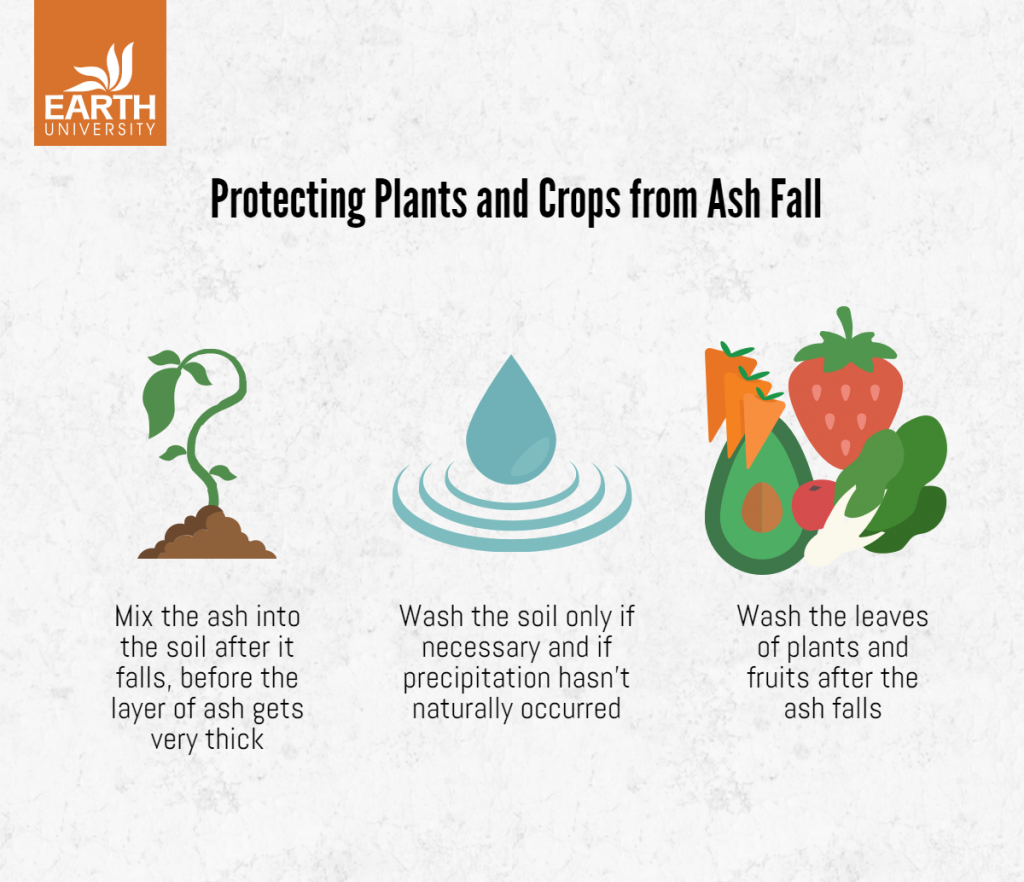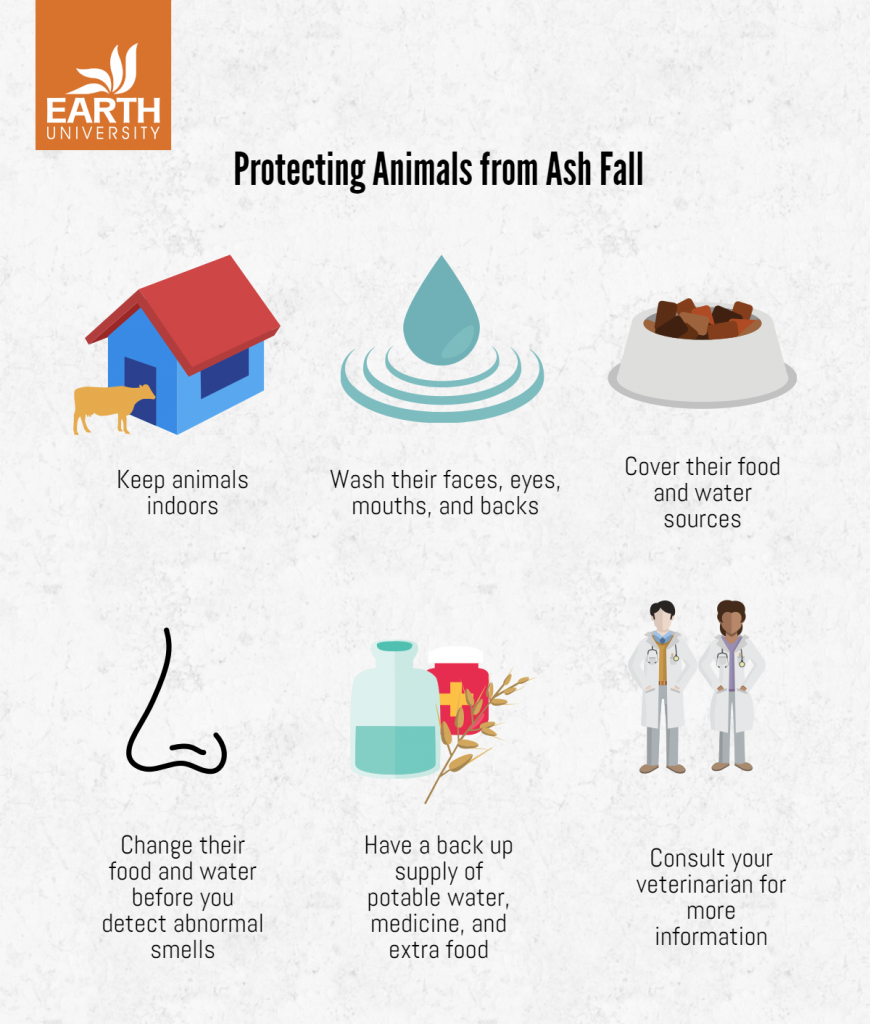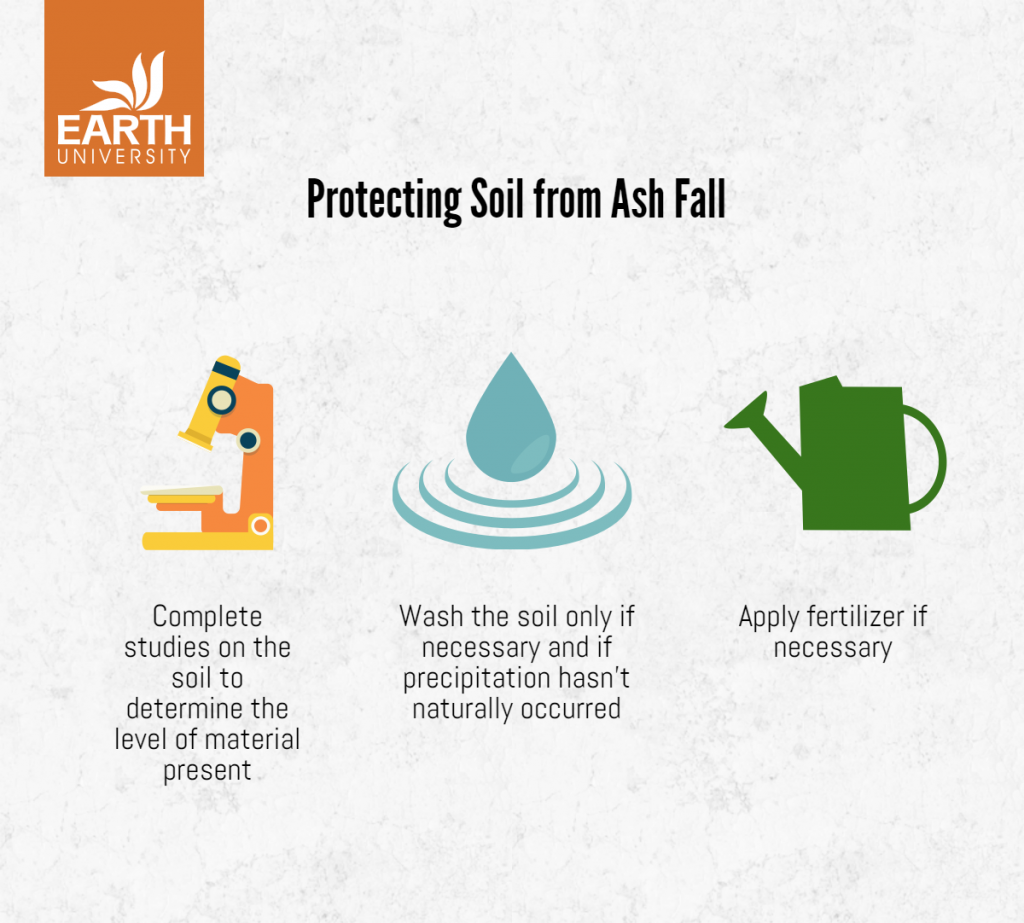How to protect animals, soil, and crops from volcanic ash
Since 2014, the Turrialba volcano has been showing constant activity. From the third week of September 2016 to present day, eruptions have spread ash over many of the cities in the Central Valley and the Caribbean side of Costa Rica.
This type of volcanic activity is not unique to Costa Rica. There are many countries in North and South America that have volcanoes that are currently active or may become so in the future.
In the following report, read some recommendations from EARTH students and professors that will teach you how to protect your animals, soil, and crops from ash.
The Turrialba Volcano
The Turrialba volcano is located 24 km northwest of the city of Turrialba, Cartago, Costa Rica, and is part of the Central Volcanic Range (CVC).
It shares the same base with the Irazu volcano and is the easternmost mountain of the CVC. A large boiler forms the top of it where inside lie three main hot craters and others that have been disfigured by eruption and erosion. Similarly there are other much older structures called pyroclastic cone satellites (accumulations of ash with a certain amount of lava that forms around volcanoes) two of which are named Tiendilla and Armado.
Because the chemical components of the volcanic ash can vary, even within the same volcano, it is always necessary to take preventative measures and keep in mind that the effects will not always be the same.
Protecting Animals from Volcanic Ash
Daniel Carballo, visiting professor of Animal Reproduction and Lactation, said that studies from the National University of Costa Rica and the Volcanic and Seismological Observatory of Costa Rica (OVSICORI) reveal that there is not a considerable amount of harmful minerals (including heavy metals) present in Turrialba volcanic ash, and so there is not much of a threat to animals in the area.
However, if the animals have prolonged contact with ash, it could adversely affect their eyes, skin, and respiratory tract. Therefore it is recommended that, before excessive ash fall, you keep your animals in an enclosure.
As far as animal health is concerned, the main problem caused by the ash is how it affects the grass that the livestock eats. The ash fills the grass with minerals that can poison and cause diarrhea in the animals. By interrupting their usual diet, milk production is affected and weight loss can occur.
Smaller animals such as goats, chickens, and pets are often the most affected and in these cases, it is advisable to keep them indoors.
To guarantee that your animals have the cleanest food possible, it is a good idea to have silos or bales stored in dry places. If you are going to cut the grass, wet it beforehand.
As for pets, it is best that you keep a collar on them with their information in case they get scared, run away, and get lost. Also, make sure that their dishes and containers of food are not exposed to ash, and remember to keep them inside with proper ventilation.
Protecting Soil from Volcanic Ash
In Costa Rica, there are not many studies that discuss the effect of volcanic ash on soil. With this initiative in mind, Martin Cedeno (‘17, Colombia), José Carlos Rodríguez (‘17, Costa Rica) and Wladimir Meza (‘17, Ecuador), with help from the professor of Soil Management and Conservation in the Tropics, Dr. BK Singh, wrote “Effect of the Turrialba Volcano Ashes in the Development of Root Hairs in Corn Seedlings” in order to “understand the effects of volcanic ash from the Turrialba volcano, more specifically assessing the chemical properties, particle size, and the effect on root hair development in corn.” In this way they determined if the presence of ash in soil inhibits the growth and development of plants.
According to their research, they found that the volcanic ash affected the growth of root hairs. Yet they also concluded that each emission of ash would vary in composition and its effect on plants depended on this composition.
In this case, the most severe effects were on the plant itself, with the possibility of oxygenation and difficulty photosynthesizing, causing growth problems and possibly death of the plant.
Protecting Crops and Plants from Ash
The effects of ash fall on plants are severe. Jorge Arce, EARTH professor of Tropical Crops, told us about some of these effects.
First, he clarified that the chemical components that affect vegetation are sulfur, fluorine, calcium, aluminum, cadmium, iron, boron, copper and silica, especially because in large amounts these are toxic to plants. Besides this, the wind speed and the abrasive properties of the ash produce hundreds of micro wounds that immediately damage the plant.
It also affects the process of photosynthesis, respiration and transpiration of plants “when the ash covers the leaves, it closes their stomata and there is no photosynthesis. This also covers the top layer of leaves and prevents sunlight as it arrives. Then begins the degeneration process until the plant dies,” said Arce.
Other effects that can be found are:
- Disruption in gas exchange (Carbon dioxide into oxygen), reducing the amount of oxygen in the atmosphere
- Impaired root growth because of the covering of soil, which acts as a “cement”
- The flower part of a plant can be damaged by ash and burning. If it falls before pollination, this can affect the reproduction
- Burning of crops
- Suffering of new pests
In the forest, the weight of the ash on top of the trees can cause the branches to break, bringing down a portion of the tree. Therefore, the sun’s rays fall directly on the understory onto species that are not accustomed to this level of radiation.
“Another complication that we could find is the alteration of recycling soil nutrients. A soil has a certain balance of nutrients, and when it receives ash it will start getting some nutrients more than others. The plant, needing nourishment, will receive these excesses, become intoxicated, and die because it needs to be fed with other, more essential, nutrients,” said Arce.
Although farmers may experience losses in the short term, in the long term, ash fall is usually beneficial because it rejuvenates the soil and makes for a more fertile environment for cultivation. However, Arce points out, “this may be a process of decades, possibly 50 years, and we need to work, harvest, and eat today.”

With this recommendations ypu can help your plants and crops survive longer while a volcanic ash eruption.
Although ash fall is an event that cannot be predicted, it is possible to take action to prevent damage to our agricultural system. It is also important to be attentive to the recommendations of our government, notify authorities, and seek expert advice in case of a special event.







